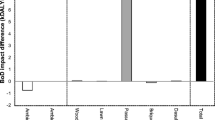Abstract
The environmental burden of disease assessment approach described in this volume is illustrated through its application to the United Arab Emirates (UAE). The UAE occupies 83,600 km2 along the Arabian Gulf, with an estimated 2011 population of about 7.5 million. The UAE supports a diversified modern economy and, as a result, faces environmental and public health problems similar to those of other industrial nations. The methods we illustrate build upon a series of guidelines on environmental burden of disease assessment published by the World Health Organization beginning in 2003. Although many countries have employed these guidelines to assess the burden of disease due to individual environmental risk factors, the comprehensive environmental burden of disease assessment across multiple exposure pathways and contaminants described in this book is the first of its kind. This project was intended to serve as a model for other nations wishing to conduct similar assessments. The basic methods can be applied to any nation or subnational geographic unit (such as a state or city). Furthermore, much of the information on relationships between exposures to pollutants and the probability of becoming ill is, and will increasingly be, relevant across the globe. These relationships are specified in the UAE Environmental Burden of Disease Model, a multilayered computer simulation tool constructed in Analytica software. Other countries can adopt this model’s structure, along with much of the input data, as a starting point for their own environmental burden of disease assessments. Also relevant to other nations is the process we used to prioritize risks to include in this analysis—a process that involved systematic consultations with environment and health stakeholders. Other nations can save considerable time and resources in carrying out similar assessments by using the approaches and modeling methods described in this book.
Access this chapter
Tax calculation will be finalised at checkout
Purchases are for personal use only
Similar content being viewed by others
References
Aspinall, Simon. 2001. Environmental development and protection in the UAE. In United Arab Emirates: A new perspective, ed. I. Al Abed and P. Hellyer, 277–304. London: Trident Press.
Bernstein, Peter L. 1996. Against the Gods: The remarkable story of risk. New York: Wiley.
Covello, V.T., and J. Mumpower. 1985. Risk analysis and risk management: an historical perspective. Risk Analysis 5(2): 103–120.
Davidson, C. 2009. Abu Dhabi’s new economy: Oil, investment, and domestic development. Middle East Policy XVI(2): 59–79.
Graham, J.D. 1995. Historical perspective on risk assessment in the federal government. Toxicology 102(1–2): 29–52.
Hoffman, A.J., H.C. Riley, J.G. Troast, and M.H. Bazerman. 2002. Cognitive and institutional barriers to new forms of cooperation on environmental protection: Insights from XL and habitat conservation plans 2002. American Behavioral Scientist 45(5): 830–845.
Launay, F., D. Roshier, R. Loughland, and S.J. Aspinall. 1997. Habitat use by houbara bustard (Chlamydotis undulate macqueenii) in arid shrubland in the United Arab Emirates. Journal of Arid Environments 35: 111–121.
Muller, J. 2011. Saving the houbara. Abu Dhabi Week, July 27.
Murray, C.J.L., M. Ezzati, A.D. Lopez, A. Rodgers, and S. Vander Hoorn. 2003. Comparative quantification of health risks: Conceptual framework and methodological issues. Population Health Metrics 1(1): 1.
Preston, S.H. 2006. Foreword to global burden of disease and risk factors, ed. A.D. Lopez, C.D. Mathers, M. Ezzati, D.T. Jamison, and C.J.L. Murray. Washington, D.C. : The International Bank for Reconstruction and Development.
Prüss-Ustün, A., and C. Corvalán. 2007. How much disease burden can be prevented by environmental interventions? Epidemiology 18(1): 167–178.
Prüss-Ustün, A., C. Mathers, C. Corvalán, and A. Woodward. 2003. Introduction and methods: Assessing the environmental burden of disease at national and local levels. Protection of the human environmental. Geneva: World Health Organization.
Rizvi, S.N.A. 1993. From tents to high rise: Economic development of the United Arab Emirates. Middle Eastern Studies 29(4): 664–678.
Scurlock, J.A., and B.R. Andersen. 2005. Diagnoses in Assyrian and Babylonian medicine: Ancient sources, translations, and modern medical analyses. Champaign: University of Illinois Press.
Stein, C., T. Kuchenmüller, S. Hendrickx, A. Prüss-Ustün, L. Wolfson, D. Engels, and J. Schlundt. 2007. The global burden of disease assessments—WHO is responsible? PLoS Neglected Tropical Diseases 1(3): e161.
UAE Federal Government. 1999. Protection and development of the environment. Federal Law 24.
UAE National Bureau of Statistics. 2011. Methodology of estimating the population in UAE. http://www.uaestatistics.gov.ae/ReportPDF/Population%20Estimates%202006%20-%202010.pdf.
United Nations Development Program. 2011. Human Development Report 2011. Sustainability and equity: A better future for all. New York, NY: Palgrave MacMillan.
Van Heezik, Y., and P. Seddon. 2001. Born to be tame. Natural History 110.5 (June 1): 58–63.
Walters, T.N., A. Kadragic, and L.M. Walters. 2006. Miracle or mirage: Is development sustainable in the United Arab Emirates? Middle East Review of International Affairs 10(3): 77–91.
Author information
Authors and Affiliations
Rights and permissions
Copyright information
© 2013 Springer Science+Business Media Dordrecht
About this chapter
Cite this chapter
Gibson, J.M., Brammer, A.S., Davidson, C.A., Folley, T., Launay, F.J.P., Thomsen, J.T.W. (2013). Introduction. In: Environmental Burden of Disease Assessment. Environmental Science and Technology Library, vol 24. Springer, Dordrecht. https://doi.org/10.1007/978-94-007-5925-1_1
Download citation
DOI: https://doi.org/10.1007/978-94-007-5925-1_1
Published:
Publisher Name: Springer, Dordrecht
Print ISBN: 978-94-007-5924-4
Online ISBN: 978-94-007-5925-1
eBook Packages: Earth and Environmental ScienceEarth and Environmental Science (R0)




